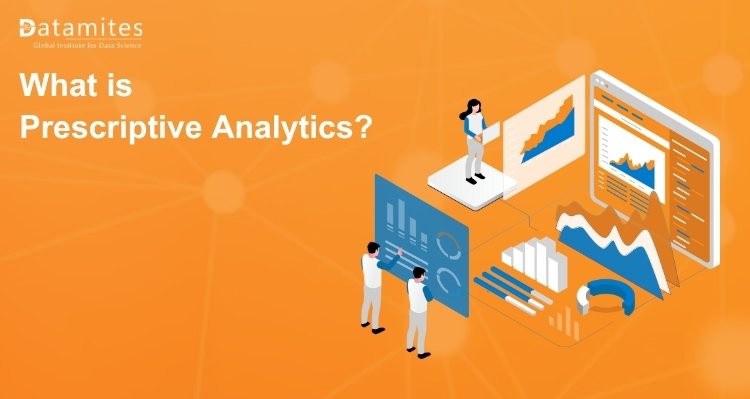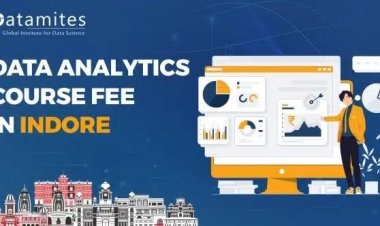What is Prescriptive Analytics?

The process of transforming raw data into useful insights is known as data analytics. This certainly sounds punchy, but the procedures required—which range from cleaning and summarizing data to comprehending why findings present themselves the way they do—are less well defined.
Prescriptive analytics, however, may be the most potent of all the techniques at the disposal of data analysts. This is due to the fact that we may use it to examine the connection between the previous acts and the results in the future, assisting in deciding what should be done. Prescriptive analytics, when properly used, holds the key to maximizing the potential of data.
In this article, we will delve deep into the subject of prescriptive analytics and what it entails.
What is Prescriptive Analytics?
Using reasoning and arithmetic to identify a desired path of action is known as prescriptive analytics. Instead of producing a statistic, a probability, or an estimate of future outcomes, it produces a choice. It is employed when determining the optimal course of action is difficult.
Prescriptive analytics is also referred to as the “future of data analytics” because it goes beyond plausible explanations and predictable predictions. In order to accurately process huge data sets, this technology uses machine learning algorithms in most applications. To create an executable, optimized strategy, prescriptive analysis examines millions of situations and takes in granular facts from multiple functions.
Refer these below articles:
- Why Python is Important for Data Science Course
- What is Predictive Analytics?
- Difference Between Data Science and Data Analytics
- Difference Between Data Scientist and Data Engineer
How Does Prescriptive Analytics Work?
Prescriptive analytics uses artificial intelligence (AI) methods like machine learning to comprehend the data it collects and learn from it, adjusting as it goes.
Today’s massive amount of data can be processed thanks to machine learning. Computer systems automatically adapt to use new or additional data as it becomes available, in a process that is considerably faster and more thorough than human capacities could handle.
Predictive analytics, which uses statistics and modeling to forecast future performance based on current and past data, complements prescriptive analytics as a sort of data analytics. Yet, it goes further: Using the predictive analytics’ prediction of what is likely to happen, it proposes what future route to pursue.
Examples Of Prescriptive Analytics
- Transportation Industry- Cost-effective delivery is crucial in this sector. Businesses can reduce their energy usage and save money, time, and resources by resolving logistical problems like erroneous delivery locations or better route planning. Businesses in this sector can utilize prescriptive analytics to receive the finest recommendations and advice rather than paying numerous dispatchers and analysts to determine the best courses of action.
- Marketing and Sales Industry- To determine the most effective marketing methods, such as how to price products or how to combine them, these agencies analyze enormous volumes of customer data. Instead of merely relying on intuition and experience, prescriptive analytics enables marketers to more precisely target the correct audience and deliver the right marketing messages.
- Hospitals- Prescriptive analytics are being used by healthcare administration and patient care providers to enhance clinical care and scheduling, deliver high-quality services, and increase patient happiness. Hospitals and clinics are able to schedule follow-up appointments and treatment times using data from prescriptive analytics.
- Manufacturers- Making better decisions on new discoveries, storage, and manufacturing is made possible for manufacturers by having the ability to model prices based on a variety of variables.
- Airlines- Prescriptive analytics can increase airline firms’ revenues by automatically changing ticket prices and availability based on the weather, consumer demand, gasoline prices, and other variables.
- Revenue Generation- With prescriptive analytics, a company can better understand what and why its customers desire to buy. With thorough and up-to-date knowledge of clients and their purchase processes, these results can be reached. This will enable managers to shorten their sales cycles and discover and open up new opportunities for cross-selling and up-selling.
Why Is Prescriptive Analytics Important?
Prescriptive analytics’ biggest pro is that it gives businesses the chance to evaluate their previous performance and map out their future. This is particularly important for struggling companies attempting to turn around, for companies with poor performance data, and for startups with a limited amount of expertise. Prescriptive analytics can estimate the time period in which one may accomplish particular goals in addition to assisting in strategizing the best course of action.
There is no longer a need for extensive human engagement when artificial intelligence and machine learning are combined. With relevant material, it skillfully recommends the ideal target consumer base at the most favorable time. Thus, it maximizes overall profitability while also increasing a business’s sales.
Certified Data Analyst Course
Uses Of Prescriptive Analytics?
- Prescriptive analytics helps data scientists process massive data sets efficiently and accurately. If done manually, it is difficult and time-consuming. Also, there would be more mistakes if it were done manually.
- In order to provide the best available answers, prescriptive analytics techniques are based on data-driven decision-making.
- Prescriptive analytics is used in business to understand consumer behavior and the specifics of their purchasing process.
- Prescriptive analytics plays a big part in sales and marketing. It maps out the most effective plan for influencing the intended audience. But once more, this approach makes extensive use of client attitudes, trending trends, and market accessibility.
- This approach analyzes every component that is provided and produces a roadmap that serves as a kind of guidance for handling difficult situations.
Advantages Of Prescriptive Analytics
By sorting through the confusion of unclear circumstances and fluctuating conditions, prescriptive analytics assists in preventing fraud, lowering risk, increasing efficiency, growing a company’s clientele, and achieving set goals. When deployed properly, prescriptive analytics also makes it easier to make wise decisions, which improves outcomes and income. Prescriptive analytics also helps firms examine associated risks rather than depending on instincts or averages by estimating the likelihood of various outcomes. Analytics also improves risk mitigation in this approach.
Read these below articles:
- How much is the Data Analytics course fee in India?
- How to Become a Data Analyst in India
- How To Become Data Scientist In India In 2023
End Note
Prescriptive analytics, when used properly, may help businesses make informed decisions rather than hasty ones based on gut feelings. Instead of relying solely on averages, it enables businesses to better understand the level of risk and uncertainty they face by simulating and visualizing the possibility of various scenarios. Worst-case scenarios may be predicted more precisely, enabling businesses to make necessary plans.
Check out DataMites online data analytics courses if you want to learn more about the intriguing topic of data analysis. You may strengthen your understanding of big data tools and engage in practical projects that will help you develop a stronger data analyst resume with the aid of these programs. Datamites Institute offers online and offline classes in India.






